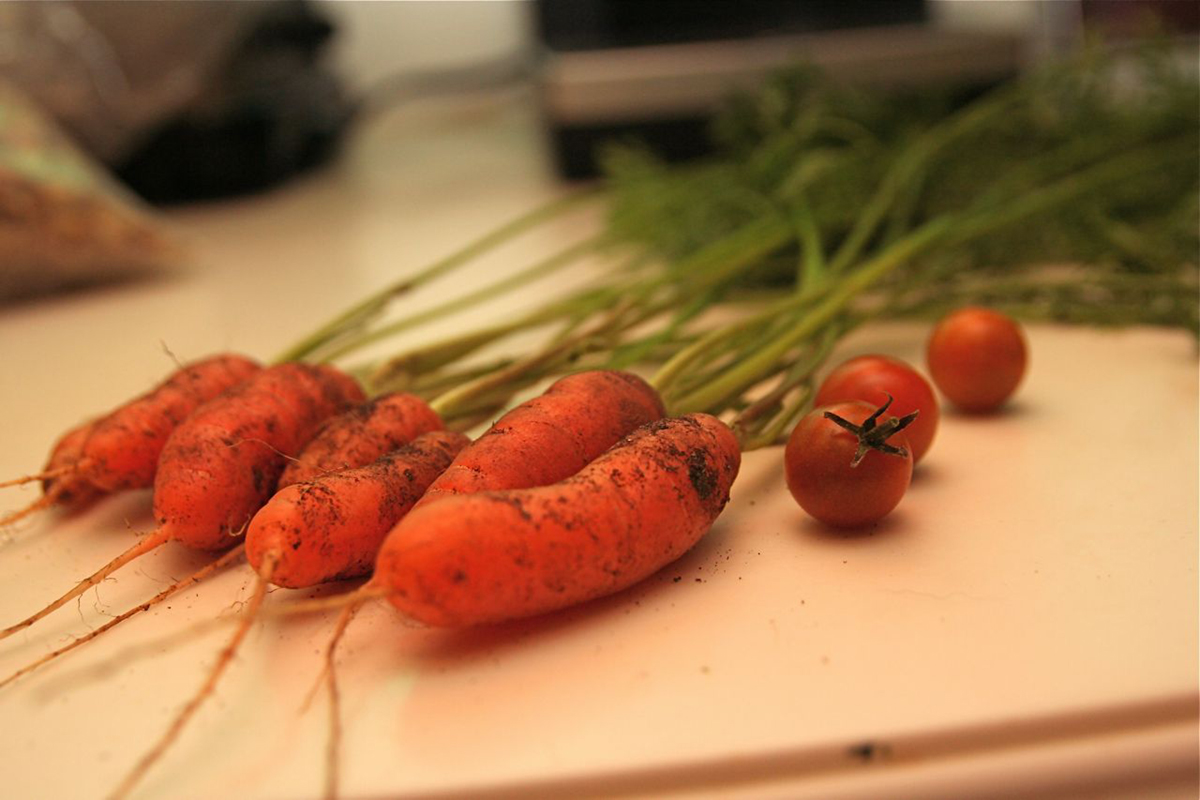Table of Contents
The smooth, cylindrical, snack-size orange root vegetable that Americans love to eat is carrots, but in a form very different from a carrot grown naturally.
Why should anyone take the trouble to buy carrots by the bunch, the old-fashioned way? Here are ten facts about carrots and baby carrots the baby carrot companies don't want you to know.
- Baby carrots are actually anti-bacterial against Escherichia coli O157:H7, Listeria monocytogenes, Yersinia enterocolitica, Pseudomonas marginalis, and Salmonella enterica. The flesh, but not the peel, of the carrot contains antimicrobial compounds that fight these food-borne bacteria. There's just one catch to using this property of baby carrots. The antibacterial action of the carrot takes time. If you let the baby carrots become tasteless by keeping them in refrigerator for a week, then they probably will have killed any bacteria that have been introduced in processing.

- Baby carrots contain all the color and all the beta-carotene as whole carrots. They don't contain as many other useful plant compounds, however, as fresh carrots with their tops.
- Twelve baby carrots is a serving of vegetables. Meeting nutritional guidelines for vegetable consumption would require eating 60 to 110 baby carrots a day (which isn't a good idea, because eating a variety of vegetables provides a variety of nutrients).
- Carrots aren't the only source of beta-carotene. Many green vegetables, such as spinach and kale, also contain beta-carotene. Dried sweet red peppers are actually a better source of beta-carotene than carrots, and paprika, grape leaves, chille peppers, and baked sweet potatoes are just as good.
- Pumpkin and red peppers are a better source of alpha-carotene than carrots.
- Eating too many carrots of any kind can cause a condition called carotinemia (sometimes referred to by its older name, xanthosis diabetica). The beta-carotene in carrots gets into circulation and accumulates in fat layers just below the skin. The first places the orange-tinted skin will appear usually are the folds in the palm and the crease just above the nose. People with darker skin will have yellowing of the palms of the hands and soles of the feet.
READ Vegetables Get Jet Lag, Too
- If you're looking for vegetables for baby, peeling, cooking, and mashing regular carrots is a better option than baby food carrots or waiting for your child to have teeth for eating baby carrots. Fresh carrots have more of the sweet and fruity tastes of natural carrots (something a generation that has only eaten baby carrots might not even know). Feeding your baby a natural food with complex flavors primes their memories for recognizing natural foods later in life. They'll like vegetables better when they are older if you give them cooked, whole vegetables as infants.
- Breastfed babies are less likely to be fussy about baby food vegetables, and to be less fussy about vegetables as they grow older. This is because of the variety of flavors in breast milk. Mothers who eat whole fresh carrots, rather than baby carrots, when they are breast feeding, have babies who eat a greater range of vegetables later in life.
- If you want your child to accept a variety of vegetables later in life, offer a variety of vegetables on a regular basis. Most children like carrots because they are sweet. The paradoxical outcome of offering children vegetables other than carrots on a regular basis is that they eat more carrots, but they also eat more green vegetables such as green beans and spinach.
- There's nothing wrong with using baby carrots in cooking. However, there are more colors, textures, and flavors in whole carrots that you peel and slice yourself. Baby carrots will never be gourmet cuisine.
- Ferdman R. Baby carrots are not baby carrots. Wonkblog. Washington Post. 13 January 2016.
- Seidel K, Kahl J, Paoletti F, Birlouez I, Busscher N, Kretzschmar U, Särkkä-Tirkkonen M, Seljåsen R, Sinesio F, Torp T, Baiamonte I. Quality assessment of baby food made of different pre-processed organic raw materials under industrial processing conditions. J Food Sci Technol. 2015 Feb. 52(2):803-12. doi: 10.1007/s13197-013-1109-5. Epub 2013 Jul 25. PMID: 25694688.
- Photo courtesy of jdickert: www.flickr.com/photos/jdickert/289732295/
- Photo courtesy of stevendepolo: www.flickr.com/photos/stevendepolo/3432901587/
- Photo courtesy of stevendepolo: www.flickr.com/photos/stevendepolo/3432901587/


Your thoughts on this